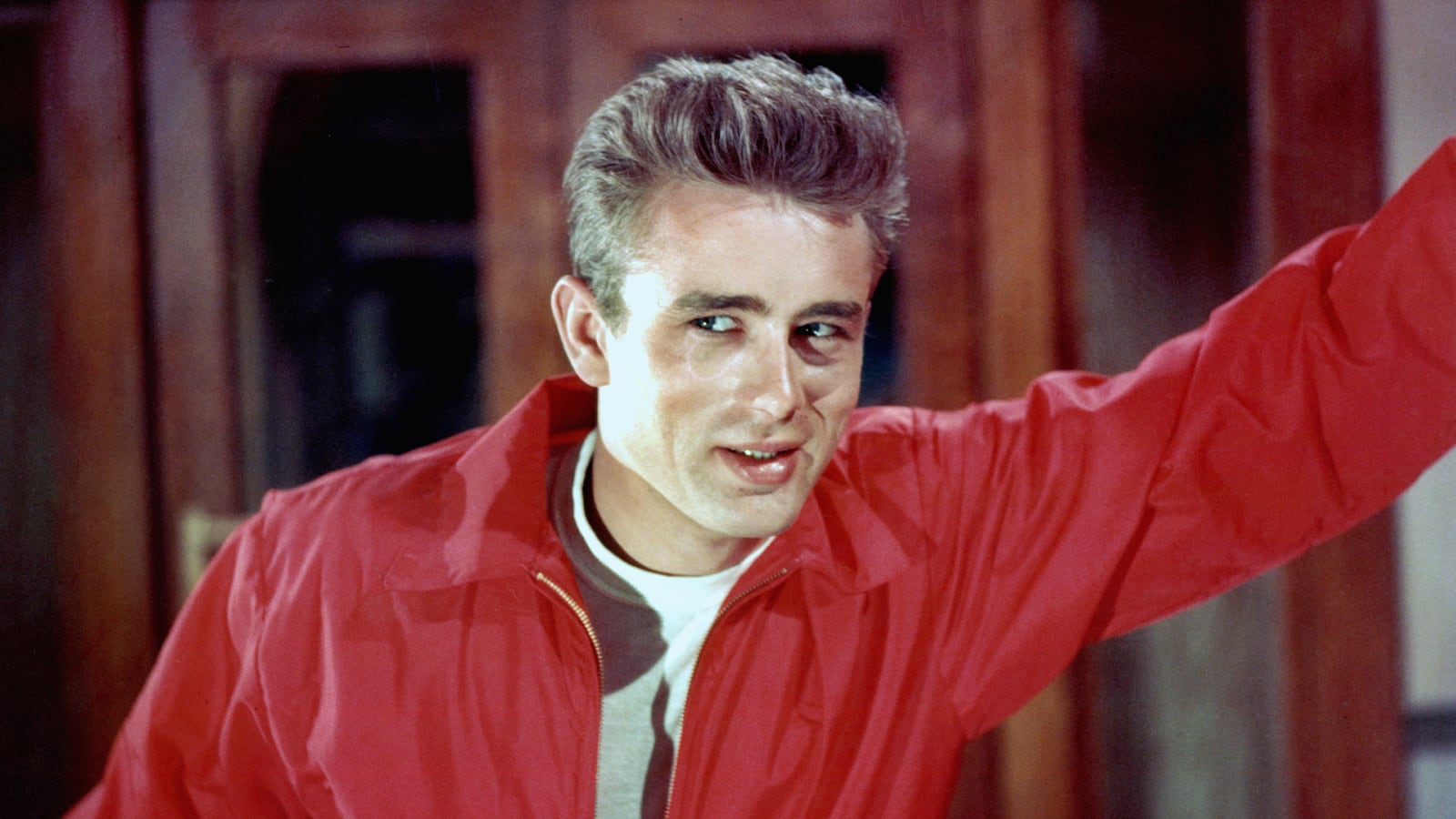Sixty years ago, on September 30, 1955, on a lonely stretch of two-lane highway in Northern California, James Dean was killed in a head-on collision. The Porsche Spyder 550 he was driving slammed into a Ford sedan when its driver did not see Dean coming and made a left-hand turn in front of him. In the violent wreck, Dean’s neck was broken. He died on impact. He was 24 years old.
At the time, Dean had made three pictures, but only East of Eden, Elia Kazan’s adaptation of John Steinbeck’s novel, had been released. In a flood of gushing reviews, critics singled out Dean for his career-making performance as the emotive, evil brother in Steinbeck’s retelling of the Cain and Abel myth. The death of the rising young star made headlines nationwide. Hedda Hopper summed up the sentiment in Hollywood when she wrote in the Los Angeles Times, “I’m still reeling from the death of James Dean, one of the greatest acting talents I’ve ever known.”
Not a month later, Rebel Without a Cause was released, and audiences lined up to see Nicholas Ray’s drama about troubled youth in America. Dean may have just died, but suddenly there he was—alive on movie screens across the country. No one could have predicted the response of the audience. Instead of being repulsed by the idea of watching a dead actor on the screen, audiences were moved by Dean’s portrayal of Jim Stark. Many could identify with the misunderstood teenager who copes with his pain by hiding behind a “cool” façade.
Soon a myth formed around Dean. That myth was only enhanced in October 1956 when his final picture, Giant, came out. In George Stevens’s adaptation of Edna Ferber’s epic novel about the Texas rich, starring Elizabeth Taylor and Rock Hudson, Dean plays Jett Rink, the “poor relation” shunned by the picture’s well-to-do family only then to be dismissed as nouveau riche after he strikes oil and gets rich. His transformation from silent cowboy to brooding, alcoholic oil baron earned Dean an Academy Award nomination. He had also been nominated for East of Eden, making him the only actor ever to receive two posthumous Academy Award nominations.
As the years passed and it became apparent just how enormous the loss to acting was on that late afternoon in September when Dean died in a car crash, his myth grew. Over time, he would become a legend as well recognized around the world as two other American icons—Marilyn Monroe and Elvis Presley. What allowed his myth to flourish, however, was not his death, as tragic as it was, but the enduring power of his art. For in the end James Dean was a transformative actor.
Before Dean, acting was different than it would be after him. In the ’30s, the ’40s, and the early ’50s, actors performed in a classical style. Clark Gable in Gone with the Wind, Gary Cooper in Sergeant York, Spencer Tracy in Boys Town—all displayed a controlled, objective style of acting. But Dean, along with Marlon Brando and Montgomery Clift—two actors whose work influenced him—challenged the accepted manner of their art, even the way their art was created. Brando in A Streetcar Named Desire, Clift in A Place in the Sun, and Dean in East of Eden, all were examples of the highly personal Method acting.
“Here’s the whole thing about Method acting,” says David Garfield, author of The Actors Studio: A Player’s Place. “The actor began to use elements from his own life and experiences in a way that actors had never done before. He tapped into real things out of his personal life that would feed his acting. It was immediate and direct. Dean came to the Method almost by instinct, using his own quirks and understanding of the craft.”
Clift would make 17 pictures before he died in 1966, and Brando would make more than twice that number, but Dean, with his three finely crafted, near-perfect performances, became a symbol for the revolution in acting in the ’60s that gave rise to actors like Harvey Keitel, Robert De Niro, and Al Pacino, who went so far as to call Dean “the inspiration.” “Dean was very physical when he acted, which is rare,” says Anton Corbijn, the director of Life, a film about Dean and his friendship with photographer Dennis Stock to be released by Cinedigm on December 4. “Dean wanted to remain true to his character. I think that is what draws other actors to him.”
What did Dean do that made him different? While Gable and Cooper and Tracy were guarded in their acting, Dean opened himself up to the audience. There was no such thing as an emotion too painful or too revealing to be portrayed on screen. Dean was able to play his parts as convincingly as he did because, unlike the generation before his, he was willing to reveal himself and display true emotions for the camera, even if they were painful for him to portray and painful for the audience to watch.
As for the Method, while he read Stanislavski and was a member of the Actors Studio, Dean remained his own artist. “The ultimate thing for any artist is to be in control of his work,” Corbijn says. “Dean tried to do this by ignoring some of the Studio rules. That and the truthfulness he seeks in the characters he plays make Dean an inspiration.”
Specifically, Dean formulated his own theories, and all of these theories dove-tailed into the idea that acting had to be spontaneous, emotional, in the moment. With Dean, the phrase in the moment did not carry the same meaning it did with other actors, even those who used the Method. For Dean believed that the moment was the most important element in the process of acting, that an actor should work only moment to moment, and that an effective performance was a series of brilliant moments strung together like pearls in a necklace.
“An actor must interpret life,” James Dean once said, “and in order to do so [he] must be willing to accept all the experiences life has to offer. In fact, he must seek out more of life than life puts at his feet. In the short span of his lifetime, an actor must learn all there is to know, experience all there is to experience, or approach that state as closely as possible. He must be superhuman in his efforts to store away in the core of his subconscious everything that he might be called upon to use in the expression of his art.”
Paul Alexander is the author of numerous books, among them Boulevard of Broken Dreams: The Life, Times, and Legend of James Dean. His new portrait of Dean, Being James Dean, has just been released by Rosetta Books.




